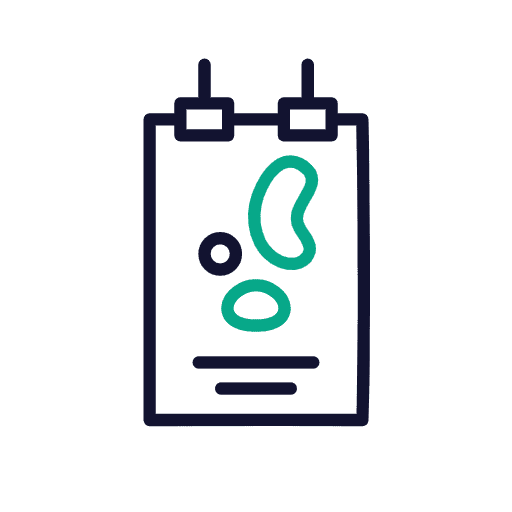It has been estimated that more than 78 million visits to the physician office over a 10 year period are for acute pharyngitis, and among those 15% to 30% of cases originated from Group A Streptococcus (GAS) and 2% from Influenza. In order to reduce the number of hospitalizations due to pharyngitis and reduce financial burden for patients, one way is to get access to testing and get treated in the earlier stage of the infection. Early treatment of the disease may limit the duration of illness and as a result of less hospitalization. Below we’ll discuss types of testing and benefits to pharmacies for offering this service.
Types of Testing

The most common type of test is called “Rapid Influenza Diagnostic Tests.” (RIDTs) RIDTs detect antigens and take approximately 10-15 minutes to show the result. It has moderate sensitivity (50-70%) and high specificity. FDA now requires RIDTs to achieve 80% sensitivity. However, detection of antigen does not necessarily indicate detection of viable infectious virus or on-going influenza viral replication
Another type of test is the rapid molecular assays. These can detect influenza viral nucleic acids in the upper respiratory tract. It takes 15-20 minutes for the result to come out and is generally more accurate than RIDTs with a sensitivity of 90-95%.
Lastly, there are the Reverse Transcription Polymerase Chain Reactions (RT-PCR), viral cultures, and immunofluorescence assays that are performed in hospitals and specialized laboratories. Results from these tests may take several hours.
- RT-PCR identifies the presence of the influenza viral RNA and nucleic acids in the respiratory tract. The test is able to differentiate different subtypes of viruses.
- Viral culture tests may take 1-3 days for the result to come back. Therefore they are usually used for surveillance and antigenic characterization of new seasonal influenza strains to be included in the next year’s vaccine rather than testing for active infections.
- Immunofluorescence utilizes a fluorescent microscope to produce results in about 2-4 hours with moderate sensitivity and high specificity. It can detect influenza A and B viral antigens, but it is not capable of differentiating the subtypes of influenza A viruses.
Testing & Treatment

Confirmation of infection by diagnostic testing is not required for medication decision making. Decision making should be based on signs and symptoms of the illness. Influenza testing may be used to help make informed decisions on antibiotic and antiviral treatment use, the need for further diagnostic tests, and consideration for home care.
Interpretation of the test result should consider several factors, including the predictive values of the test, test sensitivity and specificity, time from illness onset to specimen collection, and prevalence of influenza in the patient population. All hospitalized patients with suspected influenza should be tested with RT-PCR. Furthermore, influenza testing may help inform decisions on infection prevention and control practices.
Testing Benefits for Pharmacies

Many benefits arise from testing at pharmacy locations. It helps to establish a solid foundation for community pharmacists and patients’ relationships. It also leads to opportunities of care as pharmacies are one of the most accessible healthcare providers. Other testing benefits include increased chances for face-to-face counseling and the opportunity for telepharmacy with GAS and flu testing.
Benefits for Customers
Benefits to the pharmacy customer include improved access to care by providing options outside of normal pharmacy and physician office hours. Additionally, pharmacy testing can lead to earlier symptom resolution and ultimately less patient hospitalizations and less financial burden. This also leads to great pharmacist and patient relationships being established.
Benefits for Customers
Benefits to the pharmacy customer include improved access to care by providing options outside of normal pharmacy and physician office hours. Additionally, pharmacy testing can lead to earlier symptom resolution and ultimately less patient hospitalizations and less financial burden. This also leads to great pharmacist and patient relationships being established.
State Regulations Regarding Rapid Diagnostic Test for Flu and Strep

- Idaho pharmacists are allowed to prescribe medications to treat strep/flu with a rapid diagnostic test. Pharmacies must develop an evidence-based protocol as no state protocol was mandated.
- The Kentucky Board of Pharmacy has approved a statewide protocol including doctors to sign off on a pharmacist when prescribing strep and flu testing.
- Florida recently passed a law that under physicians’ protocols pharmacists are allowed to test and treat minor conditions including strep and flu.
- Many other states have CPA authority to allow pharmacists to prescribe with rapid diagnostic tests. The states include, ID, IL, MI, MN, MT, NE, NM, ND, SD, TN, UT, VT, WA, WI.
Pharmacies offering testing services can lead to healthier communities and quicker diagnosis of disease. Not only will this allow pharmacists to practice at the top of their license, it will allow for patients to continue to receive exceptional care from the pharmacy teams they love.


